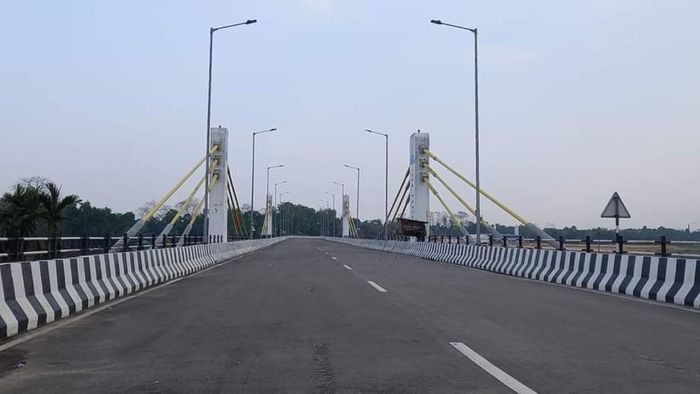How Tripura's Maitri Setu will become Gateway of Southeast Asia
The Northeastern states which generally face connectivity issues and also snapped from mainstream India during monsoon set to benefit from improved connectivity with the operationalization of Maitri Setu, located in Sabroom, a bordering town in Tripura’s South district.

- Jul 04, 2024,
- Updated Jul 04, 2024, 5:29 PM IST
The Northeastern states which generally face connectivity issues and also snapped from mainstream India during monsoon set to benefit from improved connectivity with the operationalization of Maitri Setu, located in Sabroom, a bordering town in Tripura’s South district.
This development is especially crucial during the monsoon season when communication disruptions are common through National Highways and Railways leading to a crisis of essential commodities.
Till today Tripura and the rest of the state in NE depend on the Railway tracks, and roadways for the import or export of goods via Assam.
The states especially Tripura, Mizoram, Manipur and parts of Assam face acute crises of fuel and other essential items during the heavy rainfall leading to the damage of railway tracks and national highways.
About Maitri Setu
Maitri Setu is a 1.9-kilometer-long bridge built over the Feni River, connecting Sabroom in South Tripura to Ramgarh in Bangladesh. Constructed at a cost of INR 133 crore by the National Highways and Infrastructure Development Corporation Limited (NHIDCL), the bridge stands as a symbol of Indo-Bangladesh cooperation. It was inaugurated in June 2017 by Indian Prime Minister Narendra Modi and Bangladesh Prime Minister Sheikh Hasina. The project is fully funded by the Indian central government.
Also Read: Tripura to get four new ropeways, feasibility studies underway
A Gateway to the Northeast
Maitri Setu provides the fastest land route to connect the landlocked Northeast region of India with Chittagong Port in Bangladesh via Sabroom. The opening of the bridge is expected to significantly boost trade and tourism in South Assam, Manipur, Mizoram, and other northeastern states. Moreover, it will create numerous opportunities in Bangladesh.
Tripura shares an interstate border with Assam and Mizoram as well as 856 km long international border with Bangladesh.
By optimizing transportation routes, the bridge unlocks access to untapped markets in East and Southeast Asian economies. Currently, goods from Agartala must travel 1,600 kilometers through the Siliguri corridor to reach Kolkata Port. However, with transit through Bangladesh, the distance is reduced to 450 kilometers. If borders are open to Indian trucks, goods from Agartala would only need to travel 200 kilometers to reach Chattogram Port in Bangladesh, reducing transport costs by 80 percent.
The bridge also positions Agartala as one of the closest cities to an international sea port, thereby unlocking untapped markets in East and Southeast Asian economies. This makes Tripura a critical gateway to the Northeast.
Integrated Check Post (ICP) at Sabroom
In addition to the bridge, an Integrated Check Post (ICP) has been inaugurated at Sabroom. This INR 232 crore project, managed by the Land Ports Authority of India, will facilitate the seamless movement of goods and passengers between India and Bangladesh. This initiative aligns with Prime Minister Modi's Look East Policy and aims to enhance trade and commerce between India and the countries of Eastern and South-East Asia.
The operationalization of Maitri Setu and the ICP at Sabroom marks a significant milestone in the connectivity and economic integration of the Northeast region of India with Bangladesh and beyond. This development promises to bring economic prosperity and improved infrastructure to the region, benefiting both India and Bangladesh.